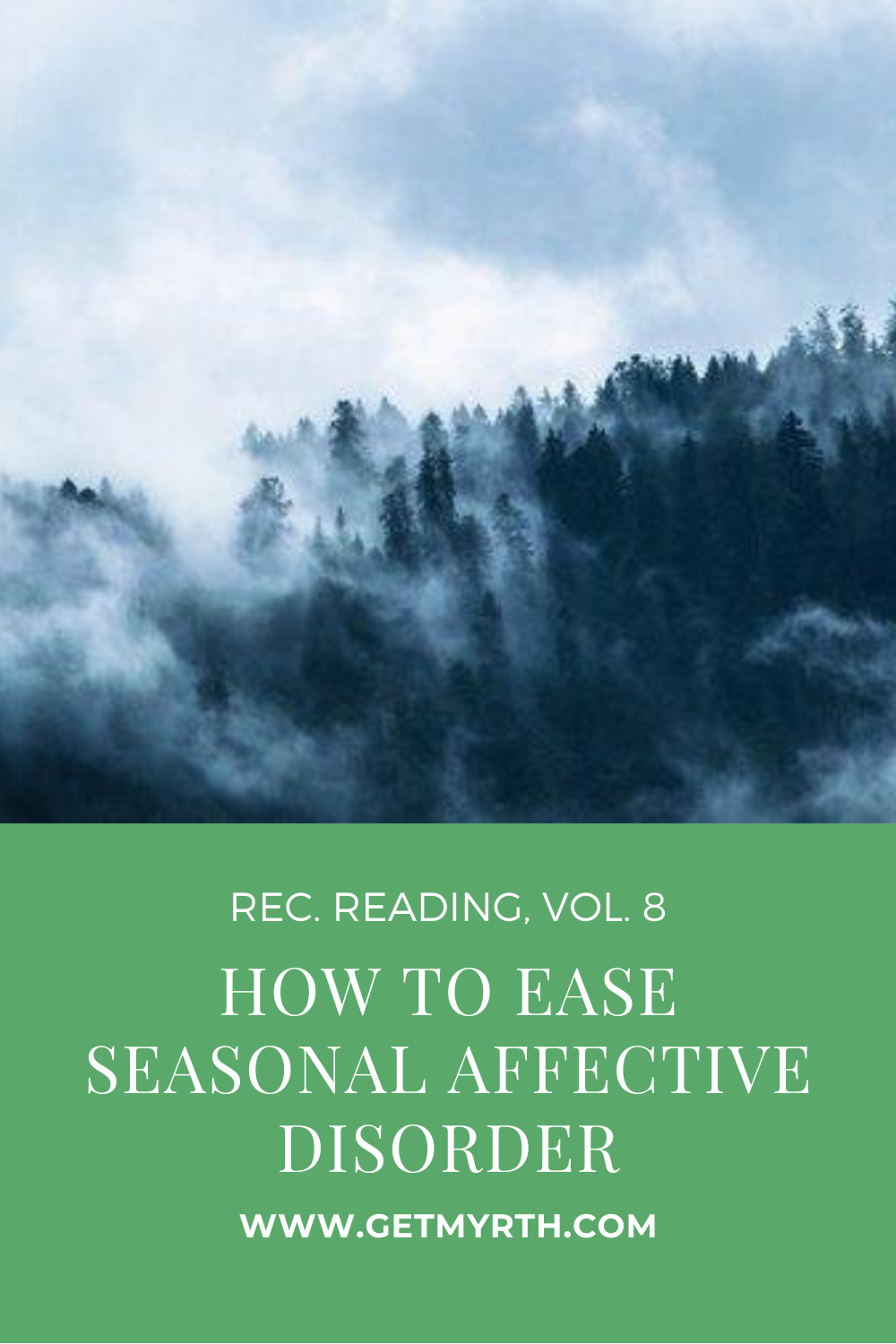Learn How to Improve Seasonal Affective Disorder: Rec. Reading v8
We recognize that habit-building and good mental health can’t be isolated to just one corner of the internet. Myrth is our favorite tool, but it’s not our only tool. In our regular Recommended Reading series, we’ll share links to articles, books, and other tools that we think you’ll find helpful in your journey.
As the seasons here in the Northern Hemisphere slowly slide from autumn toward winter, many people are noticing a shift in their moods. They’re feeling irritable or listless or distractible, or maybe all three and more. They’re not alone, and there’s a good explanation for it.
Millions of people suffer from Seasonal Affective Disorder, a mental health issue triggered by the change in seasons. While the most common version is linked to short winter days, some people experience it at the peak of summer instead.
In case you’re noticing some of these symptoms in yourself, this week’s Recommended Reading focuses on Seasonal Affective Disorder: what it is, how to help ease the symptoms, and possible long-term solutions.
1. An Overview from the National Institute of Mental Health
Whenever we’re learning about something new, we like to start with a broad swathe of research. A good resource for learning about things like Seasonal Affective Disorder, or SAD, is the National Institute of Mental Health. They explain that SAD is:
a type of depression that comes and goes with the seasons, typically starting in the late fall and early winter and going away during the spring and summer. Depressive episodes linked to the summer can occur, but are much less common than winter episodes of SAD. Seasonal Affective Disorder (SAD) is not considered as a separate disorder. It is a type of depression displaying a recurring seasonal pattern.
If you’ve noticed a trend in your mental health over time and that it always takes a significant dip during a particular season, it’s worth talking to a health care provider about it.
2. Some Solutions for Coping with SAD
We’re action-oriented here at Myrth, so we love this article that rounds up various ways to deal with SAD. One that we hadn’t considered? The weighted blanket. Here’s more:
"After struggling with insomnia, I was looking for a natural sleep solution and through my research I came across the medical science of putting weight on the body, which can help people sleep better in a natural way," Kathrin Hamm, CEO and founder of weighted blanket company Bearaby, told CNN. "I found that weighted blankets have been around for more than 60 years now and studies have found that the feeling of weight on the body reduces stress and anxiety levels, and give users the deepest, most restful sleep."
One of the most common symptoms of SAD is a persistent anxiety, so if a good night’s sleep under a cozy blanket can help with that, we’re all in.
3. Light Therapy as a SAD Treatment Method
One of the most common treatment methods for SAD is the use of a specialized therapy lamp that mimics the effects of daylight. A few minutes in front of the lamp each day can help significantly, but you should consult with your doctor before starting a course of light therapy to make sure it’s right for you. As the Mayo Clinic explains,
A light therapy box mimics outdoor light. Researchers believe this type of light causes a chemical change in the brain that lifts your mood and eases other symptoms of SAD.
Generally, the light box should:
Provide an exposure to 10,000 lux of light
Emit as little UV light as possible
Typical recommendations include using the light box:
Within the first hour of waking up in the morning
For about 20 to 30 minutes
At a distance of about 16 to 24 inches (41 to 61 centimeters) from the face
With eyes open, but not looking directly at the light
There’s been a lot of talk lately about the effects of changing our clocks with the seasons (California even made a serious effort at ending the practice this year), but we haven’t looked much at whether it affects SAD symptoms. There is some reason to suspect that the time changes might be exacerbating SAD symptoms by disrupting sleep patterns:
I’m in favor of making standard time permanent. It will allow our internal clock to be better synchronized with the sun. I realize people like daylight saving time because we get more daylight when we get home from work, but it’s going against the natural rhythm of light. People end up staying up too late and getting too little sleep. There are some advantages to daylight saving, but I think the advantages of standard time outweigh them.
We hope you found this roundup helpful, especially if you were feeling emotionally out-of-sorts and couldn’t figure out why. Maybe this will provide a helpful jumping-off point for further research. We’ll keep making efforts to get outside this winter, and we hope you’ll join us.
Have you struggled with Seasonal Affective Disorder? Tell us about your experiences below.
P.S. - You can save and share this post on Pinterest using this image:


